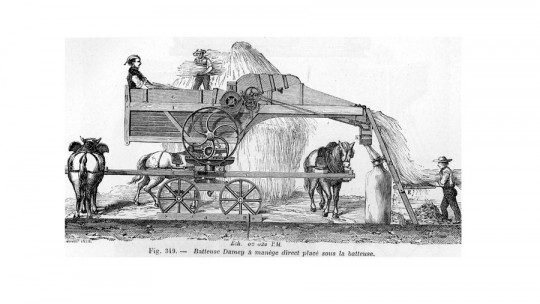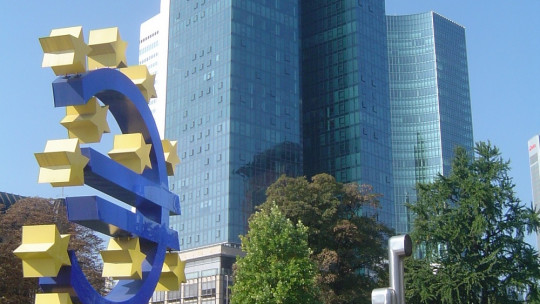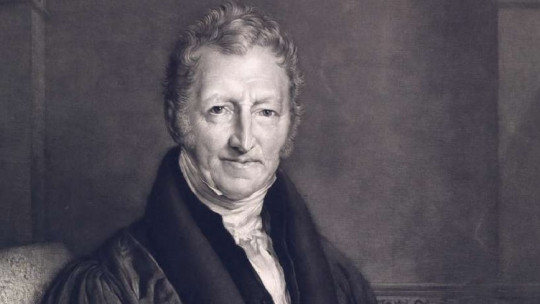Throughout history there have been multiple agricultural revolutions, that is, changes in the way the land is worked that have led to greater crop productivity and, consequently, more food.
However, The term “agricultural revolution” is usually used to refer to what occurred between the 18th and 19th centuries in Great Britain and various places in Europe It is not surprising, since it has been this revolution that has led us to live in today’s society.
Below we will see the historical context in which the agricultural revolution occurred, what caused it to occur and how it is related to the industrial revolution.
What was the agricultural revolution started in Great Britain?
Usually, when we talk about the agricultural revolution we usually refer to the transformations that occurred in Great Britain in the 18th and 19th centuries and that would later be transferred to the rest of Western Europe.
These transformations involved changes in the structure of ownership of farmland and its exploitation in addition to an increase in food productivity, a larger population and improvements in the standard of living of many people.
Throughout history there have been other agricultural revolutions whose effects have been very important for humanity, one of the oldest being the one that began about 10,000 years ago in Mesopotamia and Egypt. However, the contemporary agricultural revolution is the one that most directly affects us, since it was that process that contributed to the subsequent industrial revolution making us live like we do in modern Western countries.
Historic context
One of the most important causes behind the agricultural revolution was a change in British legislation regarding the management of farmland. Until that moment the land had been worked in a traditional way, with two exploitation systems: the “open-field” (open field) and the “common fields” (communal lands) The openfield consisted of several plots with different farms not separated or closed by any means, while the commnofield were low-productivity property systems where the fallow technique was used.
Fallowing has been a widely used farming system throughout history. This consists of cultivating land, harvesting its fruits and, after that, leaving the land for one or two years without cultivating anything until it recovers the nutrients that will make it fertile again. The main problem of this system was the fact that for a long period of time a piece of land did not have any production and, therefore, did not provide profit for a long time.
In the common field, since it was worked at the same time by several peasants, they had to agree on how to exploit it. This meant that the free initiative that each one might have could only be applied to the plots of open fields, which were not protected at all. Because of this, A movement in favor of enclosing or closing the fields began to gain strength throughout the 18th century make “enclosures” or enclosures of the land and promote production through individualized cultivation.
It is for this reason that the British Parliament passed new laws for this purpose, called “Enclosures Acts”. Although the initiative to enclose fields dates back to 1450, it was not until recent times that all crops were required to be enclosed and changes were introduced to British land ownership. From that moment on, the peasants had to close their plots and exploit them as they wanted, with the crops they wanted as long as they were owners of them.
But while this benefited some, it also hurt others. Because the plots of the same landowner were often widely dispersed with those of the others, The enclosure of all the plots caused problems for many owners when they saw that they did not have access without asking permission from their neighbors Added to this problem was the economic cost of having to fence their lands, something they could not always afford. This is why many small landowners were forced to sell their land to their neighbors.
On the other hand, we have the privatization of communal lands. Before the Enclosure Acts these belonged to all the farmers who agreed to exploit them. However, with the new law they were privatized, becoming the property of landowners with economic comfort. This was an especially serious problem for day laborers, such as cottagers, whose only property was the cattle that grazed the open, communal fields. When they closed, the day laborers could not feed their animals and were forced to sell them or be hired by landowners.
Consequences of these changes
The phenomenon of enclosures harmed small landowners, but it was a great benefit at a social level and was what caused the agricultural revolution. The wealthiest landowners found themselves in a particularly advantageous position, since they now had a large amount of land that they could exploit as they pleased and experiment as much as they wanted with it. Thanks to that, many owners were motivated to apply innovative methods and see what results they gave, something unthinkable before with common fields
The new innovations gave very good results, translated into greater productivity, more food, lower prices for local products and the strengthening of internal and external trade. Among them is The mechanical seeder, invented in 1730 by Jethro Tull This new machine made it possible to plant in lines and use excavator machines, being especially useful for working on large surfaces.
Another of the great innovations of the time was the Norfolk system , devised by Lord Townshed. This British nobleman had been a diplomat working as an ambassador in the Netherlands, where he picked up some ideas that he would end up applying in the British fields. Among them was the four-year crop rotation system, which would end up replacing the inefficient fallow system.
Through this new system, the cultivation of cereals, legumes and forage plants was alternated, a combination of plants that left enough nutrients for the next harvest. The four-year system occurred every year, instead of having a break of one or two as was the case with the fallow system. Among other improvements introduced by Lord Townshed we have new ideas for land drainage, better irrigation systems, creation of artificial meadows to feed livestock in winter and other new agricultural techniques.
As all these new techniques gave very good results, the rest of the British landowners could not resist introducing them to their fields and also devised their own. Thus, plows and reapers were improved, more powerful chemical fertilizers were manufactured, livestock breeding was improved and better crops were grown in general. As a result of this, Production increased significantly (90%) and, in addition, the prices of fruits and vegetables became cheaper This meant an improvement in the diet of both humans and animals, since there was less food shortage.
Relationship with the industrial revolution
As there was more food, people lived better and mortality decreased, which meant a notable demographic increase. However, changes in the way land and property were managed meant that fewer people could work the land. The best saving techniques made it possible to do more for less, causing many farmers to be left without work and the ever-increasing population of the towns to be forced to migrate to the cities and work in factories.
On the other hand, The landowners themselves were earning a lot of money, which they not only invested in their fields but also in founding and improving their own factories This represented a very interesting dynamic, since those who had been lucky in having land and applying agricultural improvements ended up owning factories in which those who had not been so lucky worked and had had to sell their land because they could not maintain it.
Whether in towns that had grown due to demographic increase or previously founded cities, economic activity progressively moved from the countryside to the city and went from an agricultural society to an industrial one. ANDThe countryside continued to produce food, as it was necessary to sustain the population, but the activity of the factories and workshops in the city skyrocketed The peasants became industrial workers and gave way to the next phase of history in the 19th century: the industrial revolution.









